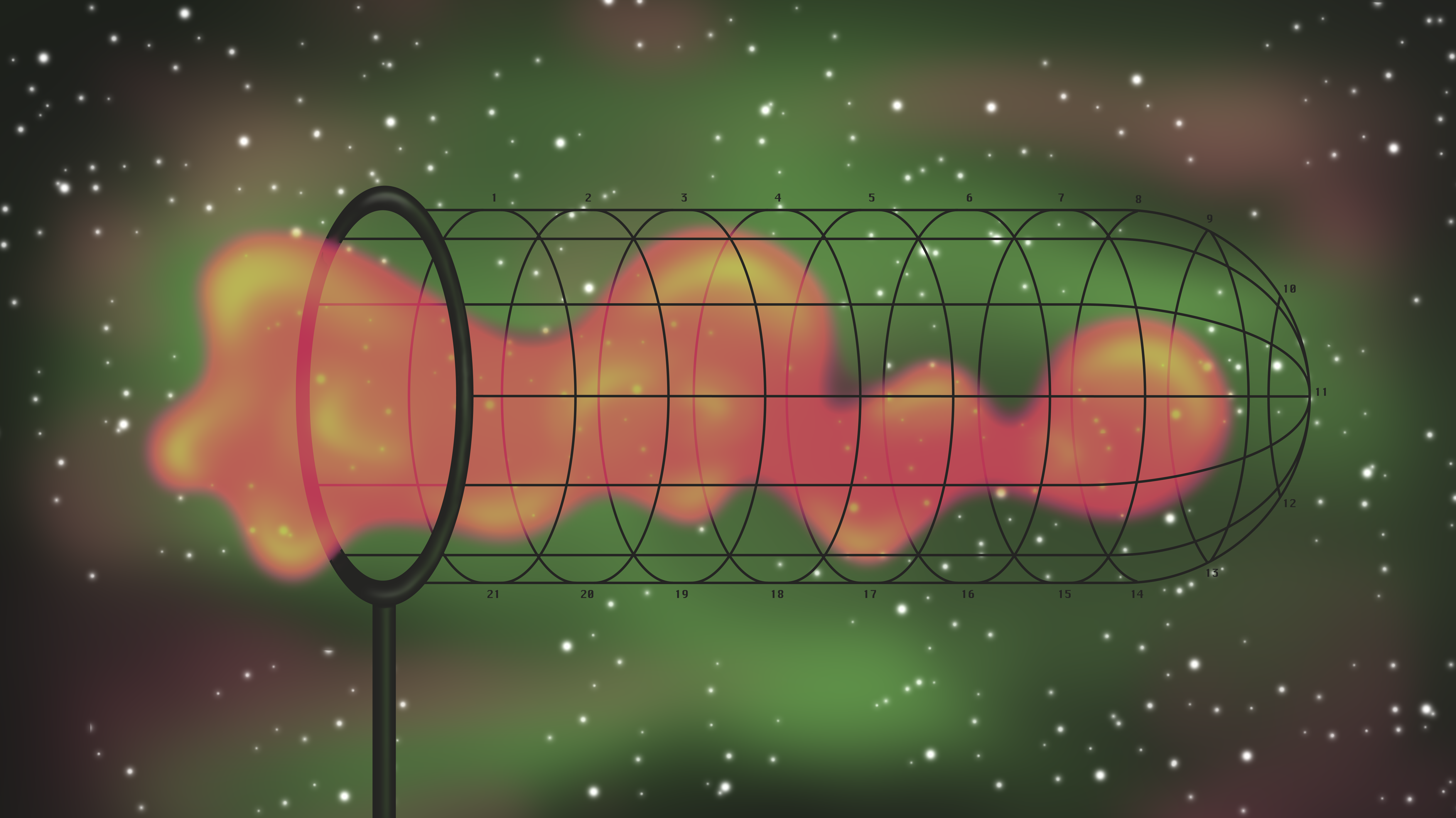Gas is an essential ingredient of galaxies because it fuels star and planet formation. Studying this gas is important because it tells us how galaxies form, evolve, and interact with their environment. In this work we studied 64 small, distant galaxies and found that the gas is not well-mixed which tells us how it is moving in, out and around the galaxies.
Views 772
Reading time 3 min
published on Nov 22, 2023
Illustration realized in the framework of a collaboration between the Image/Recit option of the HEAD (Haute École d'Art et de Design) - Genève and the Faculty of Sciences of the University of Geneva.What is a galaxy? The common conception of a galaxy, in which it is an island of stars in the vastness of space, is not the entire picture. A very important ingredient of galaxies is their gas because stars are born from this fuel. The gas – called interstellar medium - is present all through the galaxy.
Hydrogen and helium, the most abundant elements in the Universe, make up most of the interstellar medium. There are, however, small amounts of heavier elements, which astronomers refer to as metals – for example carbon, oxygen, magnesium and sulphur. Stars produce those metals when they die and explode as supernovae, subsequently being pushed out into the galaxy and enriching the gas in the interstellar medium.
Why is it important to study the gas in galaxies? Probing the gas gives us key insight into the ways galaxies form and evolve over time. Simulations of the Universe tell us that gas moves in and out of galaxies on scales larger than the galaxy itself, thereby interacting with their environment. The movement of gas around galaxies are known as galactic gas flows. Tracing gas properties and how it moves is a challenge we face because we can’t observe the gas in the same ways that we see stars.
We might think that because the galaxy rotates, the metals become evenly distributed throughout it. But what if there is a contribution from a metal-poor gas from outside the galaxy that dilutes the interstellar medium? In such case, an interstellar medium would not contain the same amount of metals in all locations and indicate that a galaxy interacts with its environment.
As an analogy, consider a galaxy as a cup of coffee. Before adding milk, the coffee is uniform in the cup, isolated from outside influences. But if milk is slowly added without the cup being stirred fast enough, we would expect that there would not be the same amount of milk and coffee in all locations. So how well are the Milky Way and other galaxies stirred?
Uncovering this would allow us to indirectly study these galactic gas flows. In addition, an interstellar medium that does not have a uniform chemical composition can affect what is formed out of this gas, which is the formation of stars and planets.
In this work we used absorption-line spectroscopy, a method which has three important components: a very bright background object (in this case, the core of a distant galaxy, emitting bright light due to its black hole), the galaxy that we are studying, and our telescopes. For the method to work, the three components have to line up in exactly that order in space. The light from the bright background object travels through the gas in the galaxy and eventually reaches us on Earth. However, metals eat up some of this light as it travels through the gas. This means that part of the light in the spectrum is missing by the time it reaches us. Elements have unique, signature bite marks in the spectrum, and so the missing part of the spectrum tells us which elements are present in the gas, and their abundance.
Absorption-line spectroscopy is a powerful method for several reasons. On one hand we get a lot of information about the metal content of the gas, and on the other hand this method allows us to see the small and faint galaxies, which are the most numerous in the Universe and difficult to observe otherwise. In our work, we used absorption-line spectroscopy to probe the gas in 64 small, distant galaxies. We investigated whether their interstellar media is well-mixed, and whether we can see evidence for the interaction of the galaxies with the gas around them.
We found that the gas in our sample of galaxies does not contain the same mix of elements in all locations. This means that the gas is not well-mixed (like your coffee should be), which could be evidence for gas moving in, out and around the galaxy. These results contribute significantly to uncovering and understanding the complexities of the interstellar medium, and how they impact the formation and evolution of galaxies.
Original Article:
Ramburuth-Hurt T, De Cia A, Krogager JK, Ledoux C, Petitjean P, Péroux C, et al. Chemical diversity of gas in distant galaxies. Astronomy & Astrophysics. 2023;672.
 Earth & Space
Earth & Space



